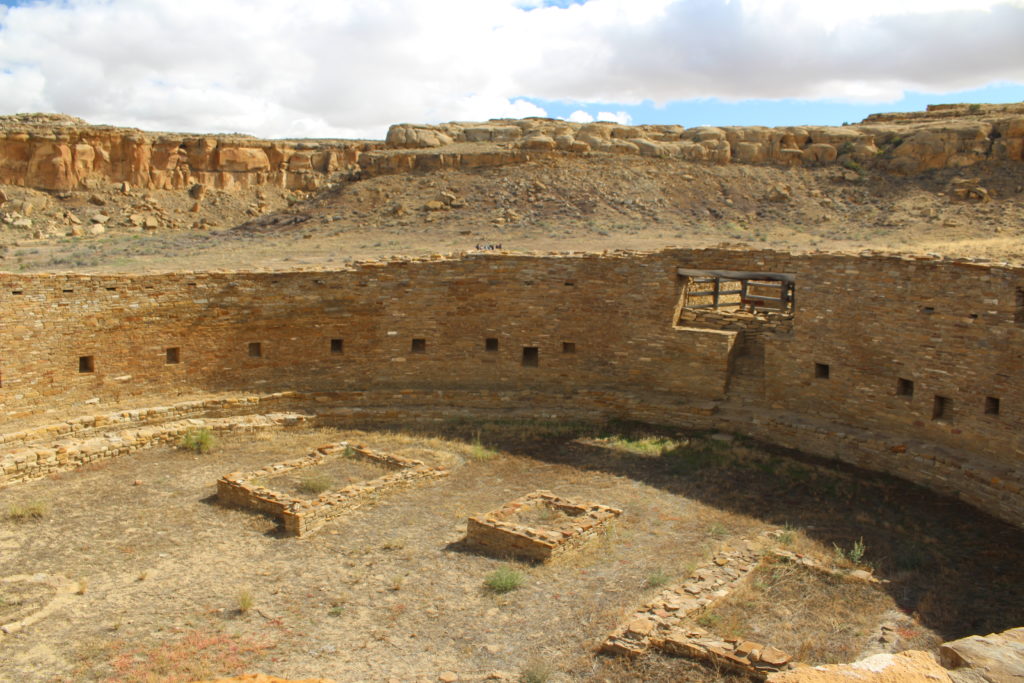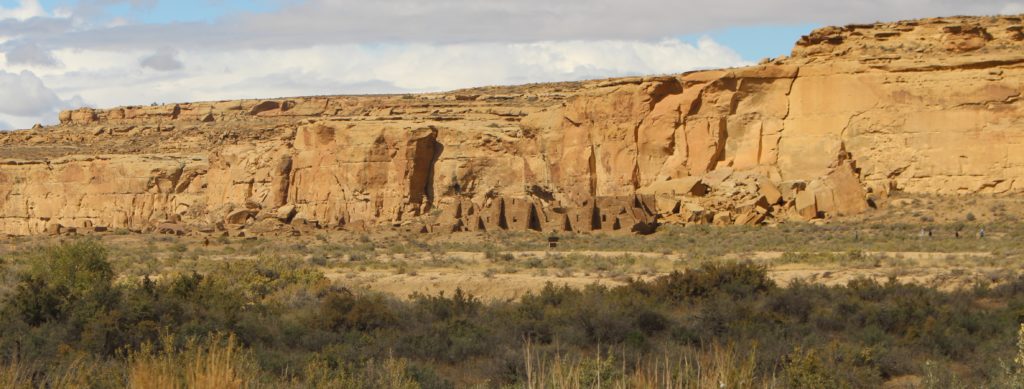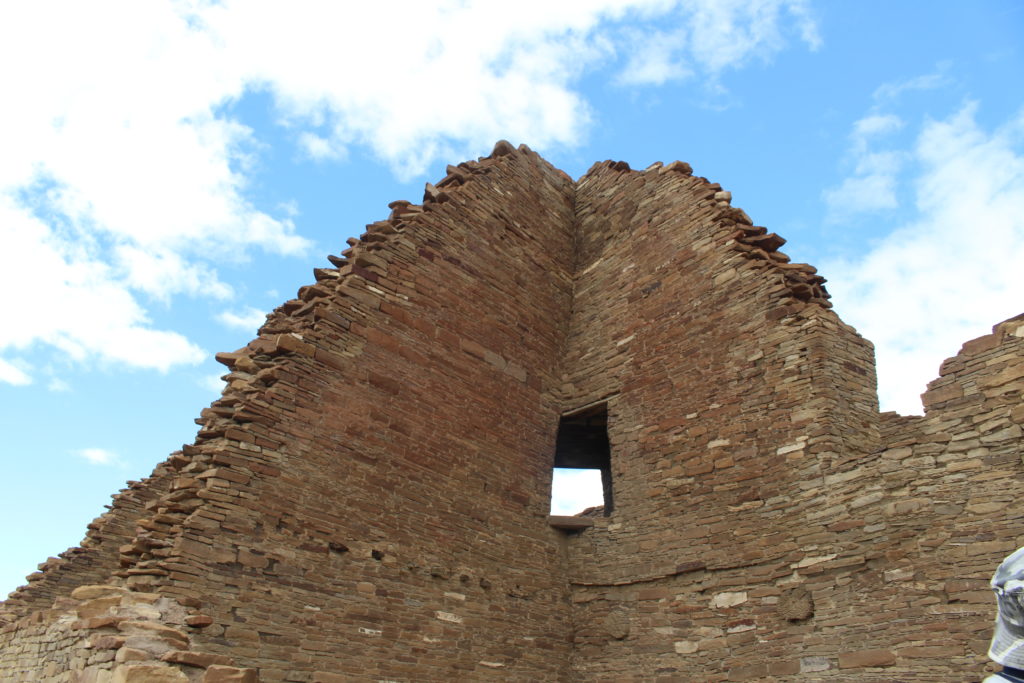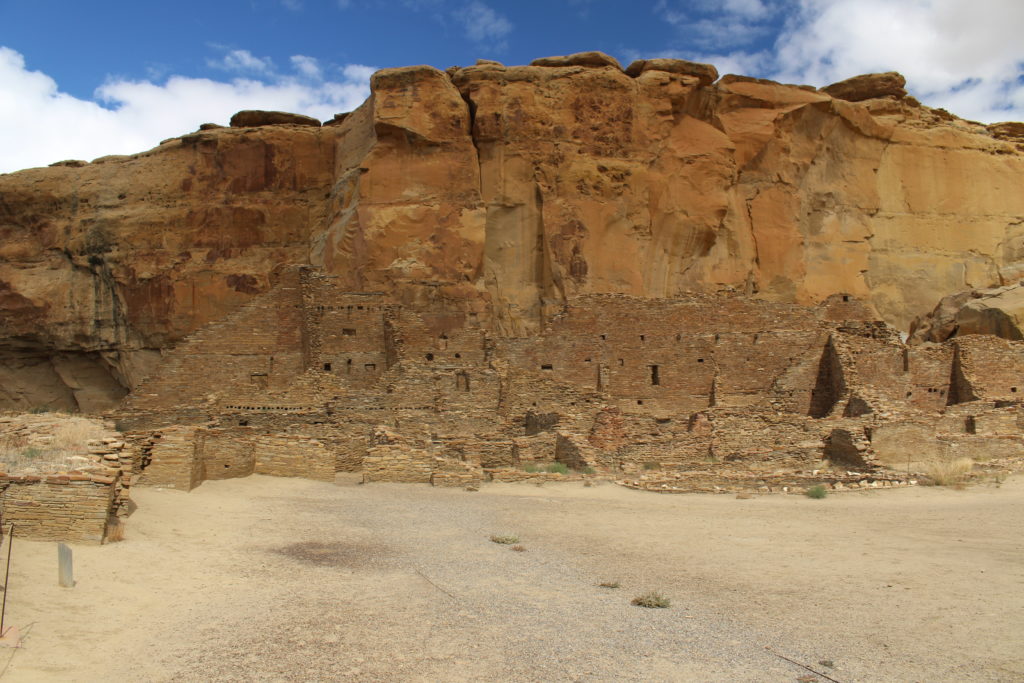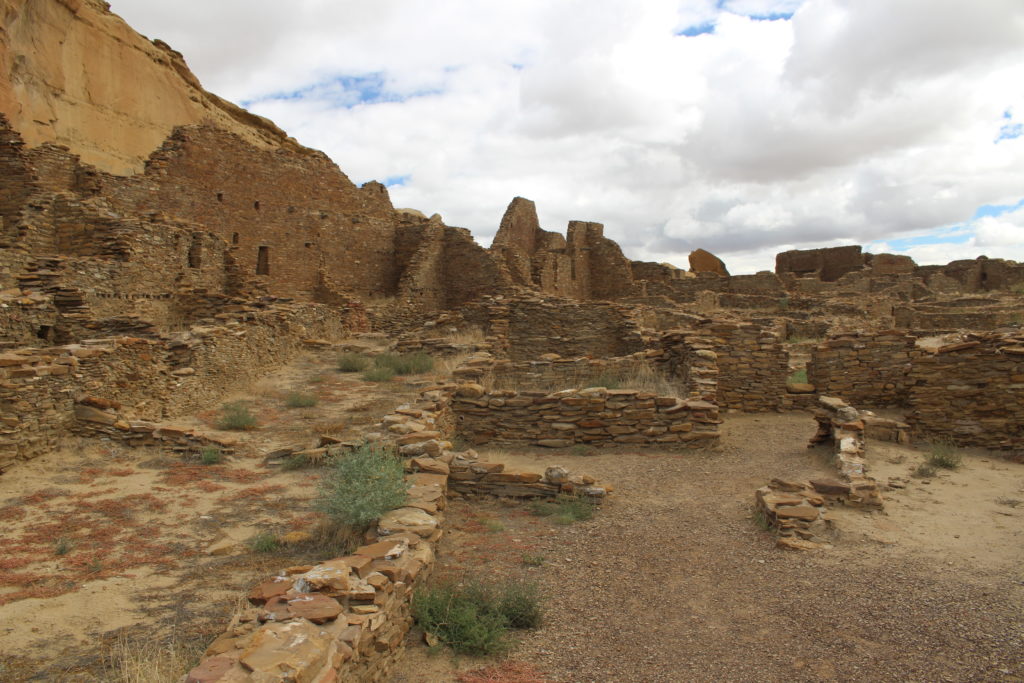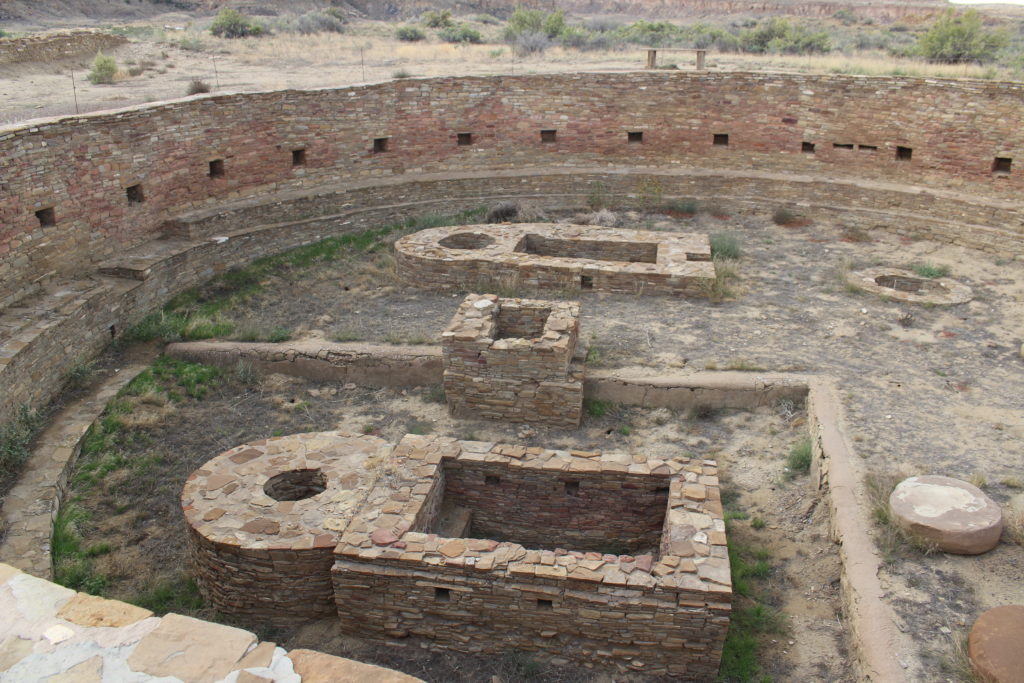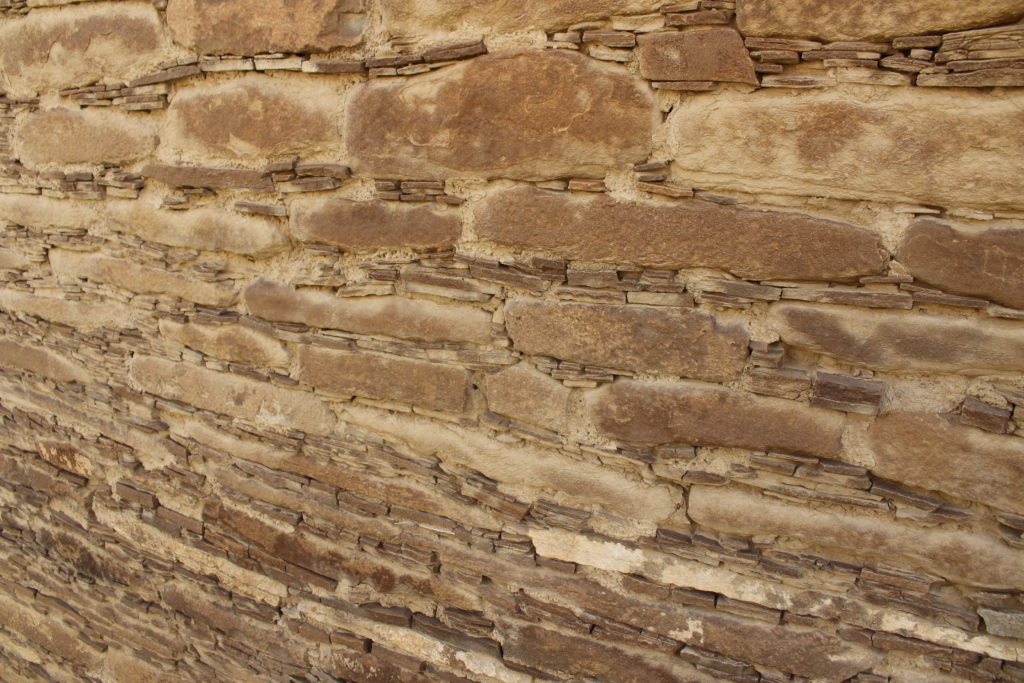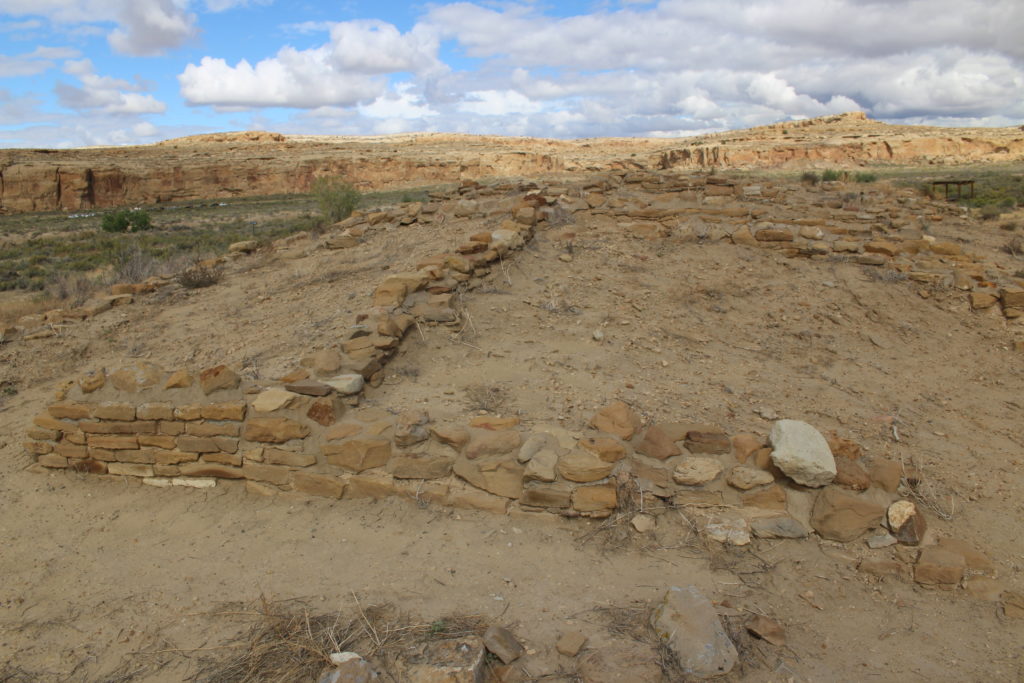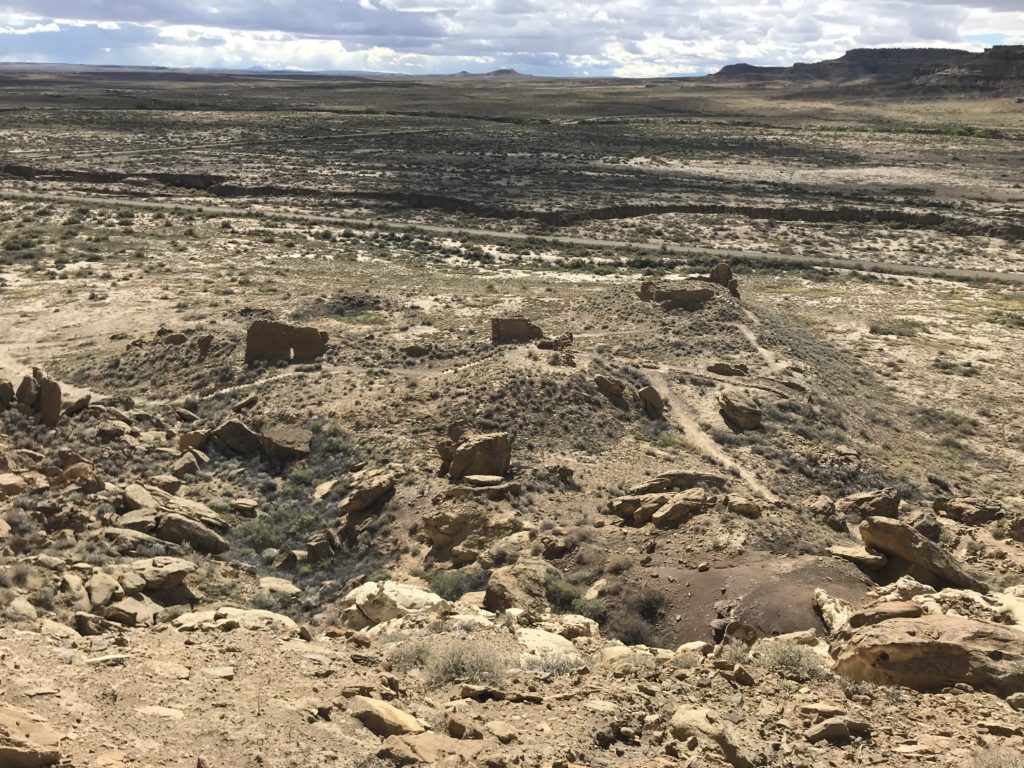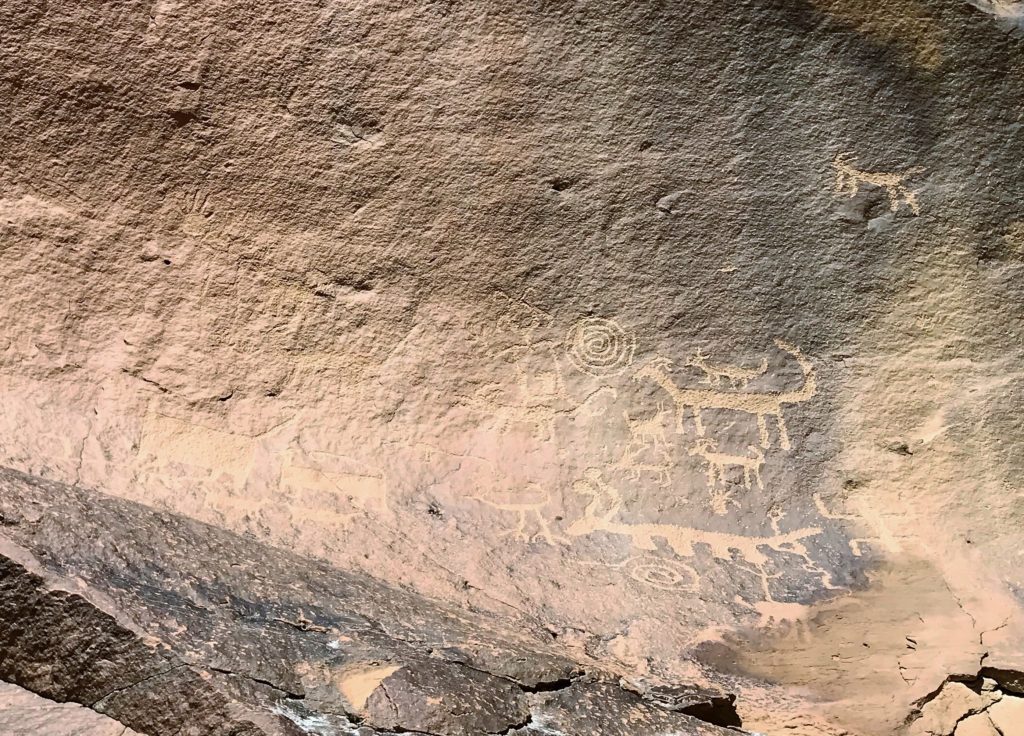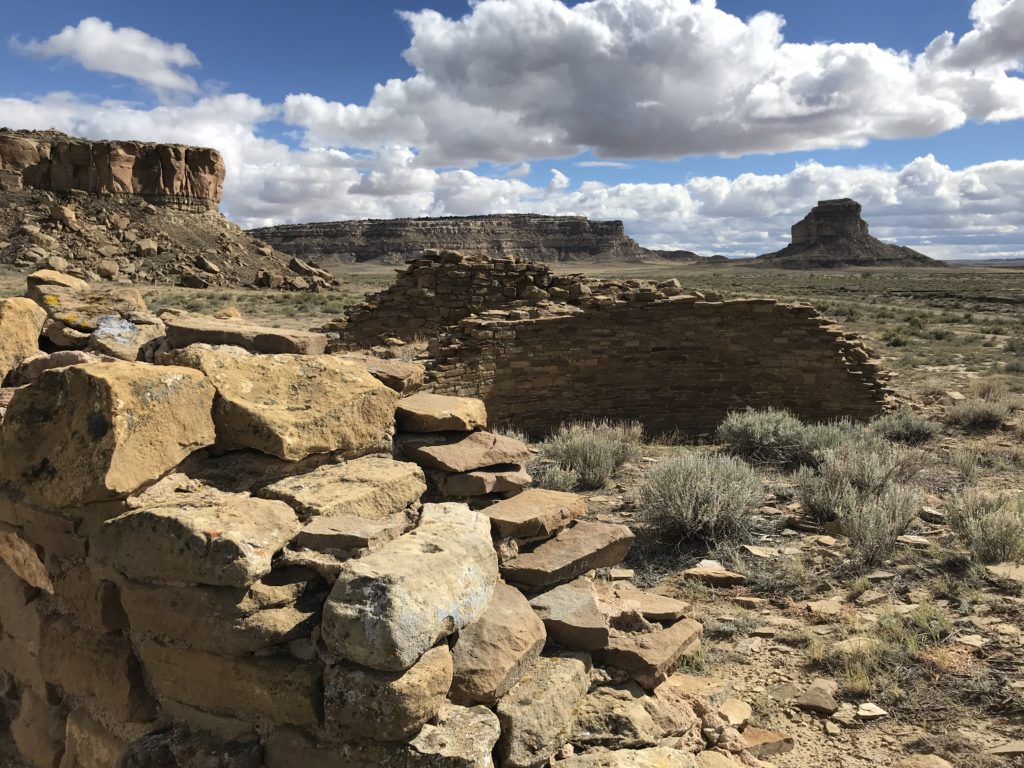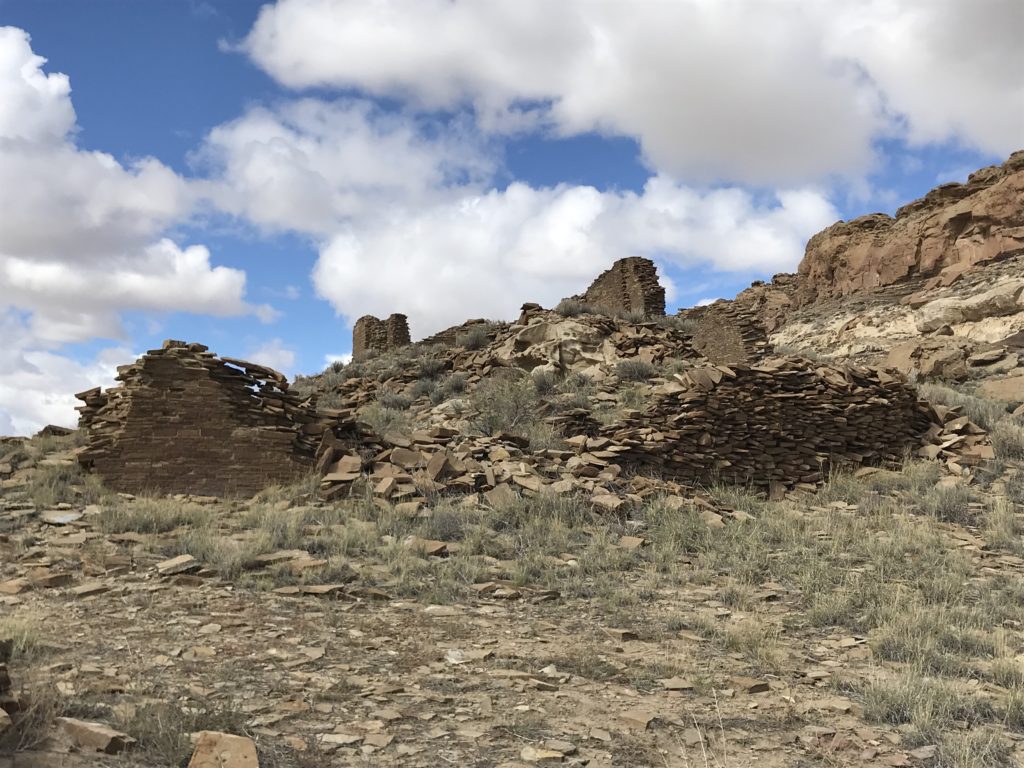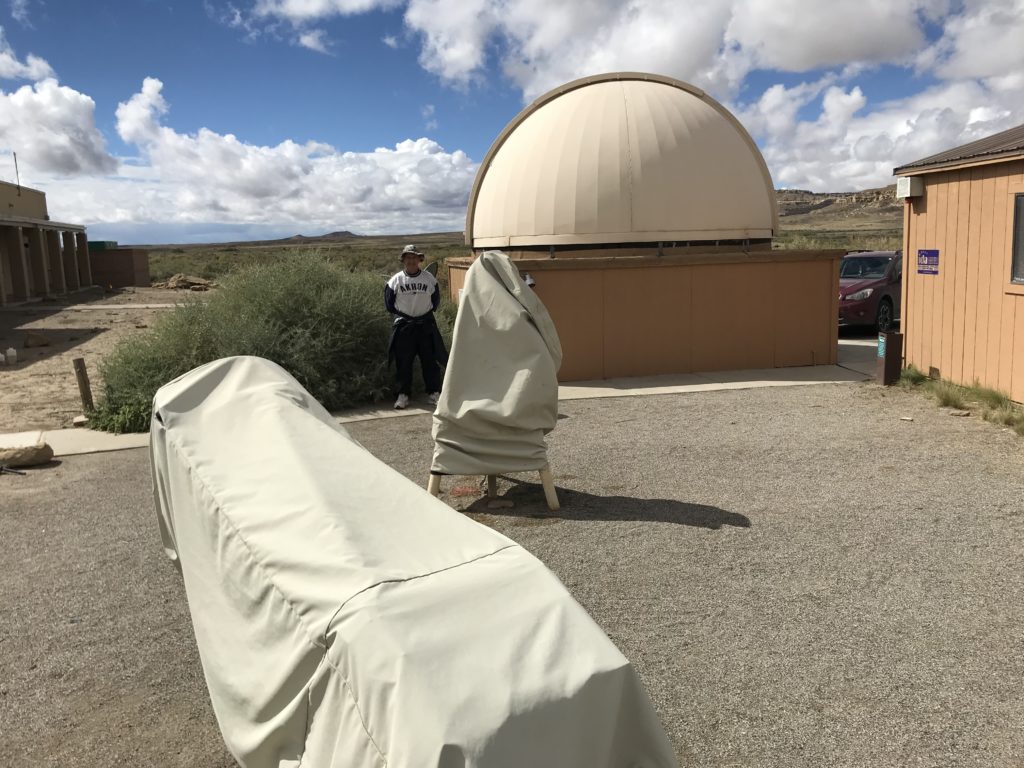 Tom and I saw just about every Ancestral Puebloan site in the southwest during our explorations in October. I’m sure you can’t tell one site from another based on my pictures. But it was interesting to see the progression of the society from large, communal villages in fertile valleys to dispersed family dwellings in cliffs and canyons. Drought and invaders threatened the way of life for the Ancestral Puebloans and so their culture evolved to reflect that. The height of their greatness as a culture is reflected in one of the last places we visited: Chaco Culture National Historical Park.
Tom and I saw just about every Ancestral Puebloan site in the southwest during our explorations in October. I’m sure you can’t tell one site from another based on my pictures. But it was interesting to see the progression of the society from large, communal villages in fertile valleys to dispersed family dwellings in cliffs and canyons. Drought and invaders threatened the way of life for the Ancestral Puebloans and so their culture evolved to reflect that. The height of their greatness as a culture is reflected in one of the last places we visited: Chaco Culture National Historical Park.
Chaco Culture National Historical Park is a remote park, difficult to access from any direction. These are the driving directions from the park’s website. The park can only be accessed by driving on dirt roads. Warning: Some of the local roads recommended by map publishers and GPS devices are unsafe for passenger cars. From the north, turn off US 550 at CR 7900, 50 miles west of Cuba. The route includes 8 miles of paved road and 13 miles of rough dirt road. The 4.5 miles before entering the park are very rough. From the south, two routes access Chaco from Highway 9. Both routes can vary from very rough to impassable. Not recommended for RVs. If you are traveling from the south, please call ahead for the latest conditions.
If a National Park website tells you roads are very rough or impassable, you need to believe them. The National Park Service is not known for its sense of humor or for exaggerating dangers. Tom and I decided to take the northern route in, even though it added 50 miles to our trip. After traveling the “very rough” road from the north, I know I never want to drive on the southern route. It took us close to 1.5 hours to drive the 13 miles of the dirt road. And half the time we still were shaking so badly we were afraid for the truck suspension. We saw RVs crawling along the road and parts of cars lying on the side of the road.
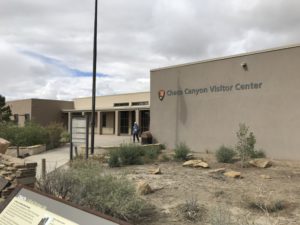 When we finally reached the park boundary, the road was again paved and easier to navigate. We stopped in the Visitors Center for some information and to watch the movie. The Visitors Center was surprisingly busy considering how difficult it was to get to the park. Several ranger hikes and programs were scheduled for the day with a night sky program after dark.
When we finally reached the park boundary, the road was again paved and easier to navigate. We stopped in the Visitors Center for some information and to watch the movie. The Visitors Center was surprisingly busy considering how difficult it was to get to the park. Several ranger hikes and programs were scheduled for the day with a night sky program after dark.
Chaco Culture was the hub of the Ancestral Puebloan culture from 800 to 1200 AD. They planned their buildings to have hundreds of rooms, some for living, some for storage, and some for religious ceremonies. Each “great house” was oriented to solar, lunar, and cardinal directions. Some of them incorporated sophisticated astronomy markers. Lines of sight through doorways aided communication. By 1100, Chaco Canyon was a ceremonial, administrative, and economic center. Road networks linked the dozens of great houses in the canyon to 200 villages through the area. Chacoans trade extended from Mexico, to the Pacific Ocean, and into the northwest.
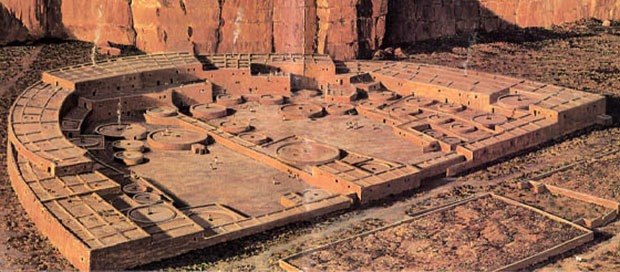
Tom and I picked up trail guides for the two biggest great houses: Casa Rinconada and Pueblo Bonito. These guides were helpful in explaining the architecture and symbolism of the great houses. Pueblo Bonito is the largest and most famous of the great houses. Spread out over three acres, it encompasses 800 rooms and varies from one to three stories tall. Walking through it, the rooms just seem to go on and on. The architecture and effort put into these great houses is awe-inspiring.
We hiked around Pueblo Bonito. Then we checked out petroglyph panels and other great houses in the canyon. We spent some time at Casa Rinconada and Una Vida. Tom and I also hiked partway up the walls of the canyon for a great view over everything. We could have walked many more miles to see more of the great houses, but they all started to blur after a while. Many of them are unexcavated in order to preserve them for the future.
Chaco Culture National Historical Park was designated a National Monument by President Theodore Roosevelt in 1907. It became a National Historical Park with the establishment of the National Park Service in 1916. In 1987 Chaco Culture was designated a World Heritage Site.
Although extremely challenging to reach, Chaco Culture National Historical Park is worth every bit of effort it takes. It is the densest concentration of Ancestral Puebloan great houses. Other Ancestral Puebloan sites are easier to access but not nearly as impressive. Definitely worth the journey.

